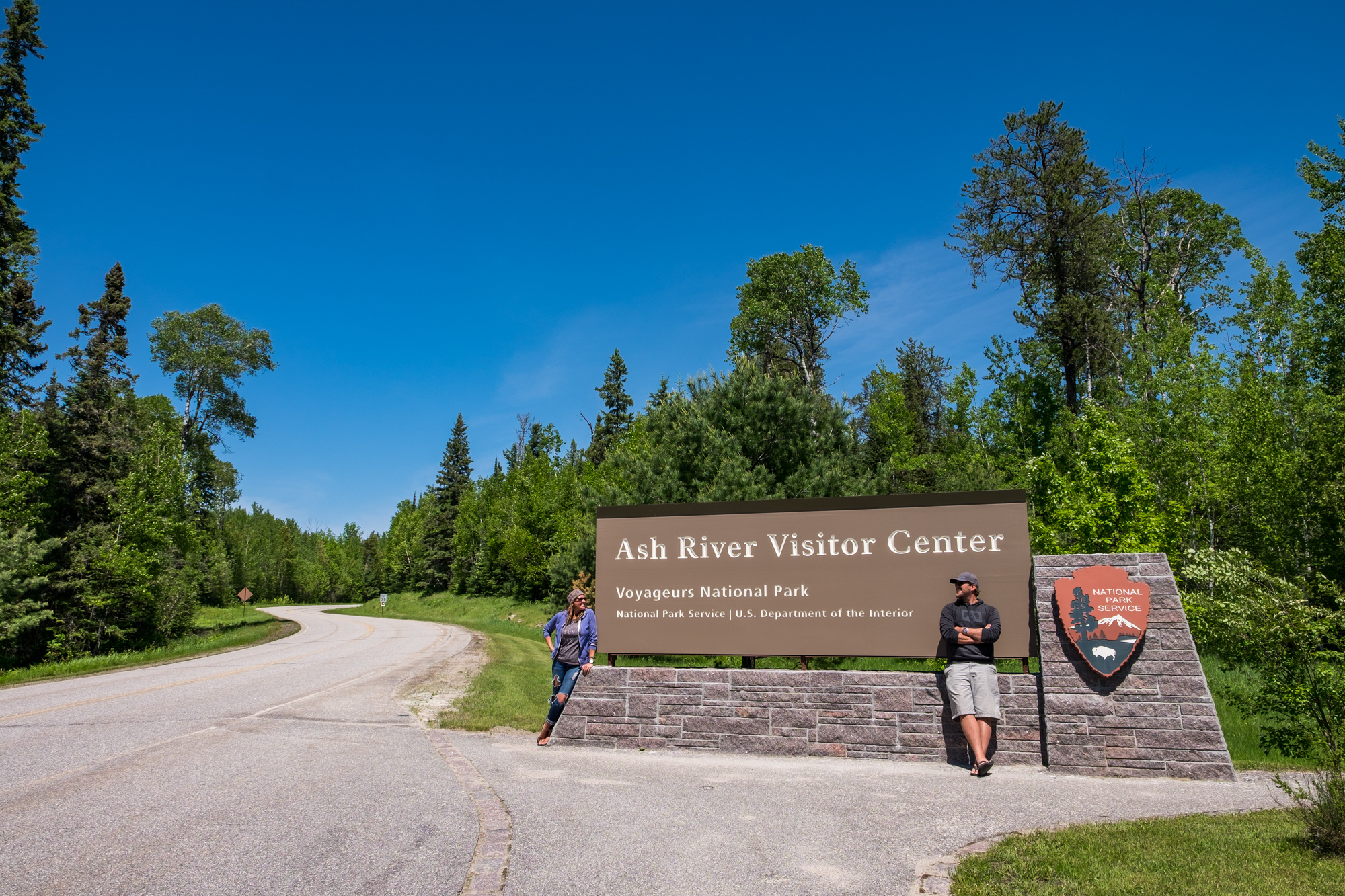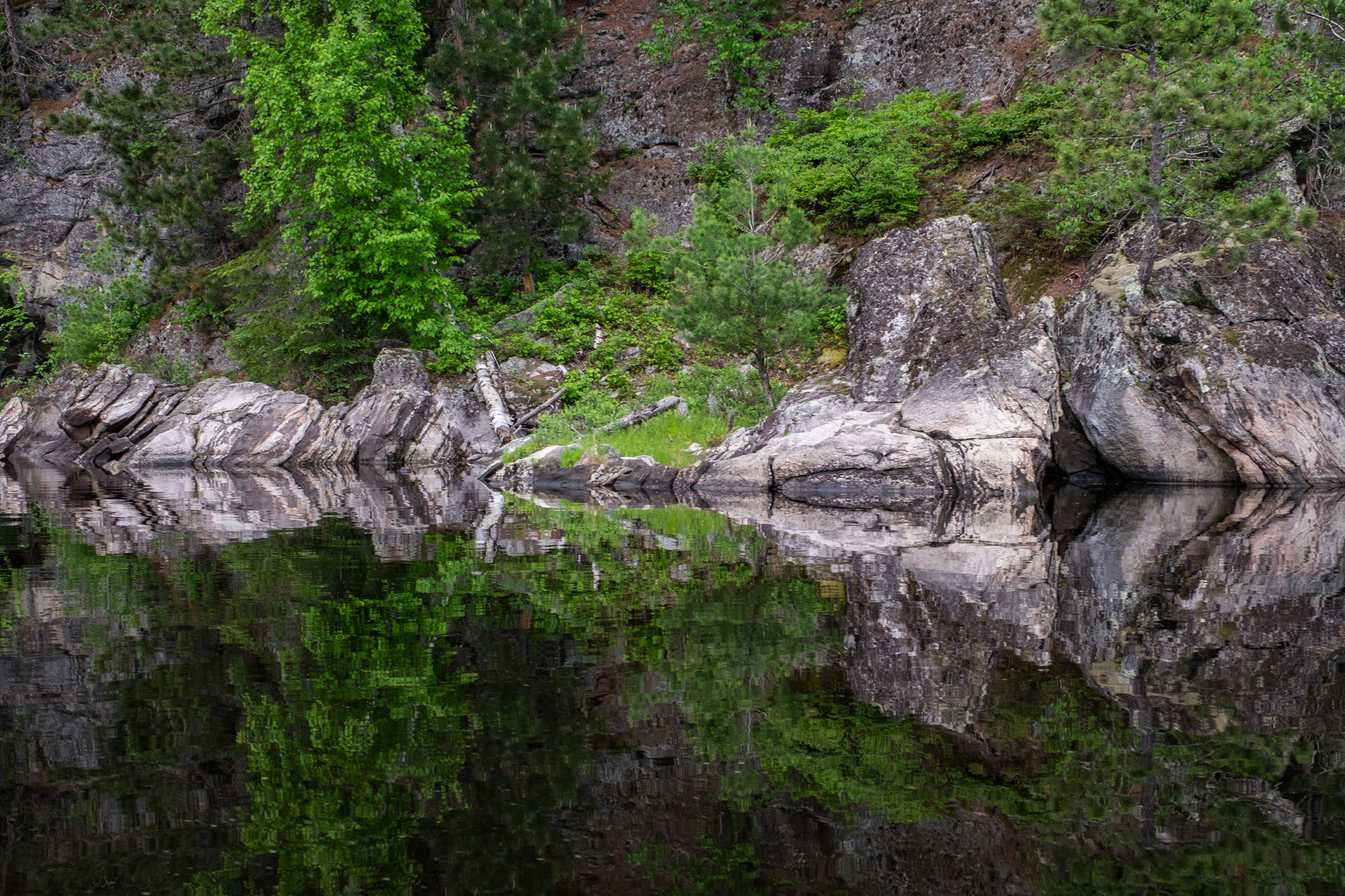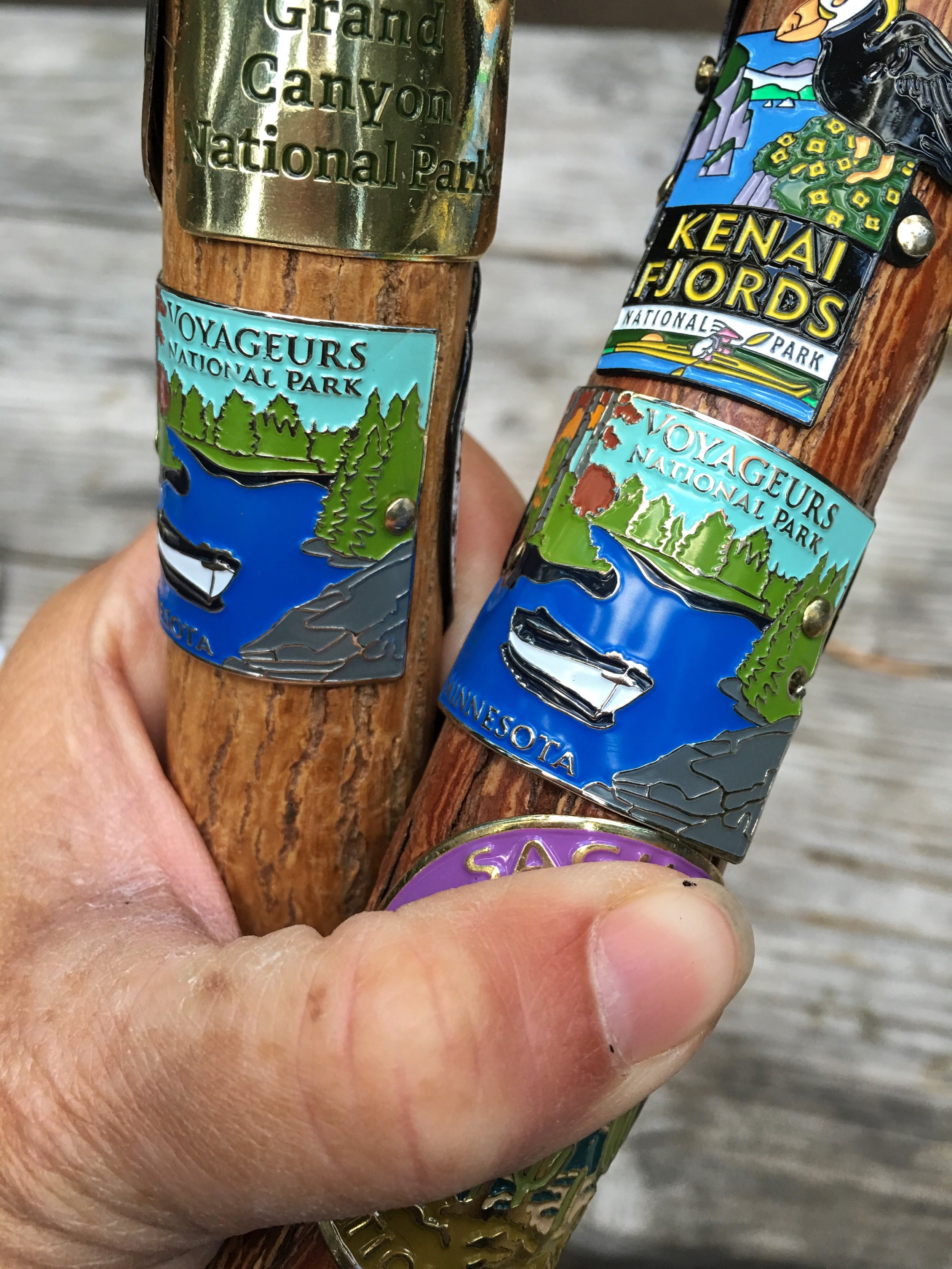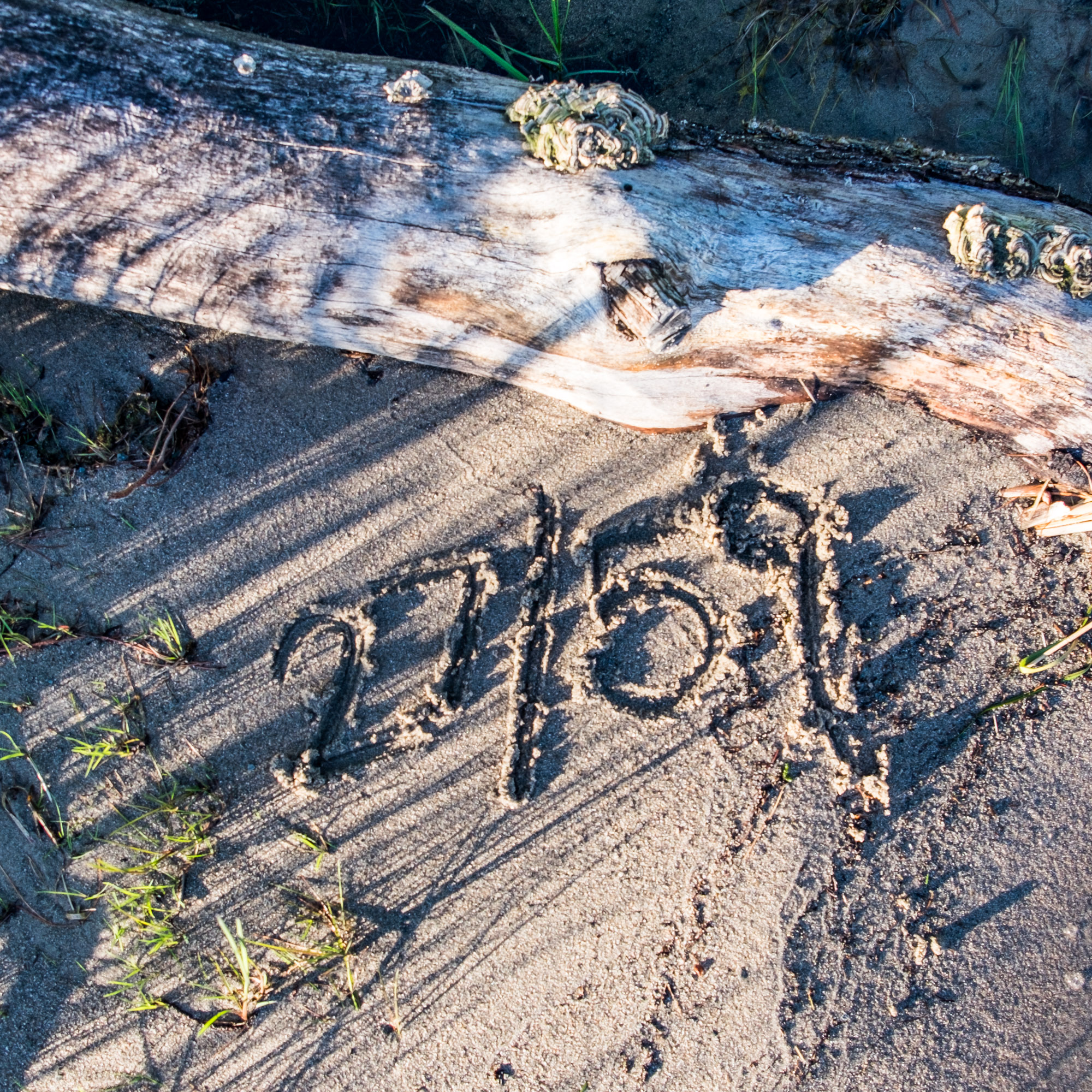Voyageurs National Park, Minnesota, USA | Park 27/59
“The untold want, by life and land ne’er granted,
Now, Voyager, sail thou forth, to seek and find.
”
Exploring Minnesota's Voyageurs National Park by Houseboat
Voy·a·geurs | noun.
A boatman employed by the fur companies in transporting goods and passengers to and from trading posts. Originally from French, literally 'voyager', from voyager 'to travel'. — Oxford Dictionary
Just five hours of quiet driving on country roads north of the Twin Cities in Minnesota resides Voyageurs National Park, one of only three national parks in the American Midwest. The theme of this park is water – 84,000 acres of freshwater highways that enfold nearly 900 islands and shore off the north woods. In the 18th and 19th centuries, voyageurs—French-Canadian fur traders who traveled by canoe—careened the interconnected waterways of the Great Lakes into the interior country, opening up trade routes with Native American tribes. The voyageurs sought highly fashionable beaver hats that were at the time coveted by Europeans; in support, native peoples set them up with food, clothing, medicine, and guidance while they muscled the goods from the wildlands of North America back to Montréal.
Voyageurs National Park is a wild waterland on the Minnesota/Canada border where anglers, campers, paddlers, and boaters from all over the world find solitude in the northern lakes region.
Today, the area is a water-lover’s paradise frequented by anglers, boaters, and campers who want to enjoy their summer on the lake in the north country. 55 miles of Minnesota wilderness intertwines the U.S.-Canadian border, and the majority of the park (which is a third water) is comprised of four large interconnected lakes—Rainy, Sand Point, Kabetogama, and Namakan—the last of which we would spend our time exploring intensely…on a houseboat.
Most of the park is accessible only by water, an obvious factor in planning logistics; to see it, we needed to be on it. We’d thought about arranging a canoe camping trip, as canoes are a classic way to traverse the area, and we had a blast exploring Everglades National Park that way earlier this year. As we began making plans we started to notice two things: 1.) There are four main lake areas, vast and not at all close enough to one another to get a solid taste of each in the short amount of time that we had to visit (it was also hard to get a sense of which area was the most photogenic by what we found online); and 2.) Adventure packages for houseboating kept popping up left and right, piquing our interest. This is obviously a special thing to do in Voyageurs so we started calling around to price it out. By the end of the second call, we were all set to hop on a houseboat for four days to explore Voyageurs in a way that sounded totally unique and awesome.
From Minneapolis-St. Paul we drove 5 hours north until we were at the Voyagaire Lodge, the outfitter and jumping off point to the Crane Lake area of national park waters where we would live in our water-based home for four days. A quick stop at the grocery store on the way to address our eat/drink needs and we were ready to cruise into the national park. Houseboats only travel about 6 knots (7 miles) per hour, so we were cruising a little slowly, but that’s what summer is for—lazy days. As we navigated the waters on the open top deck, it was immediately clear that renting a houseboat would be a super fun way to share a short vacation with family or with a group of friends. Designated tie-up spots marked by the National Park Service are located throughout the park, as are backcountry camping spots that have been carved out over the years by other visitors and locals. Most sites have a fire pit; all are first come first served, so expect to wander the water a bit while looking for an open spot, especially in the swell of summer when this area blows up with visitors. We saw a lot of really awesome shore-side camping spots, and we love camping, but never for one minute did we wonder if we had made the right choice to travel Voyageurs by houseboat—it felt special being that it was a new experience for the both of us, and at the same time it is really easy to get dialed and on the water without a lot of fuss. This experience is just awesome—and the best part of all is that it all exists within a pristine national park.
The Voyagaire Lodge, our houseboat outfitter and jumping off point to Voyageurs National Park.
Voyagaire offers a variety of houseboat sizes/styles to choose from. Book in advance, this is a very popular way to explore the lake country in northern Minnesota and it fills up fast.
Captain Jon.
Stef fully enjoying lazy days on the roof deck of the houseboat.
What you will find onboard*:
One of our backcountry tie-up spots.
Several beds and sitting areas providing plenty of sleep/lounge space; linens (for an extra fee.)
Refrigerator/freezer, oven, sink, counter space—basically a full-kitchen setup including dishes (don't forget dish soap to clean those dishes before disembarking.)
A full-sized plumbed bathroom (hot water is on a limited-size tank so you won't want to go nuts indulging in a long shower.)
CB radio—so you can call in case of emergency (such as accidentally bottoming out while mistaking a ''rocks' buoy for a 'no wake' buoy [this may or may not have happened]); and to listen in on others’ emergencies..."There's a squatch in the woods!"
An auxiliary outlet—so you can bump some tunes on the water.
A water slide that starts from the top of the boat sloping down into the lake. :)
A gas barbecue!
Upper and lower deck steering wells.
Intermittent cellular service so you can post updates on Instagram and Facebook.
Bugs. These are water vessels and the moisture attracts insects, especially with doors open much of the time. Also, check for ticks—we found a few!
A motorized dingy, required per Coast Guard regulations.
*Amenities found on standard boats, there are various sizes and models available at different pricing.
Having kayaks onboard the houseboat enabled us to scoot off at any time.
Extras:
We had a pair of kayaks tied up to the back of the boat allowing us easy opportunities to untie and paddle out to explore remote falls, beaver lagoons, find access to overland hiking trails, and to take advantage of those special instances when the light was spectacular for taking photographs.
The Voyagaire team will meet you on the water for a small fee to restock your vessel with ice, food, beer; to remove trash, whatever. And you don't need to be an expert mariner equipped with GPS coordinates to help them find you—they know the waters like the backs of their hands and will pull on right up aside you for a rendezvous. Amazing!!
Quotable Images
Fact Box
218,054 acres | One third of the park is water | Located on the Canadian Shield, home to some of the world's oldest rocks
Official name: Voyageurs National Park
Established: April 8, 1975
Location: Northern Minnesota, bordering Ontario, Canada
How the park got its name: This park was named after French-Canadian fur traders who helped to open up trade routes in the American North. The word voyageur is French, meaning traveler. It has evolved to include the western definition of voyageur, which, according to the Oxford Dictionary, refers to boatmen employed by fur trading companies.
The historic Kettle Falls Hotel in Voyageurs National Park is a must see and is accessible to travelers of all ability levels.
Iconic site in the park: The Kettle Falls Hotel is the only lodging option within the national park, and it has a fascinating past too. The charming white-and-red-trimmed building with screened-in wraparound porch holds the secrets of travelers to the area since 1918, when Robert Williams purchased the hotel for $1,000 and four barrels of whiskey. Here, the tradition of home cooking and a welcome-mat-open-to-all that is akin to the Midwest mentality lives on.
Accessible adventure: Take the National Park Service Kettle Falls cruise to the hotel where you will venture off on a ranger-led walk to the dam overlook and learn about the history of the area while taking in views of Canada. Afterwards, the tour heads on to the historic hotel where visitors enjoy a meal, a wander among the historic grounds, and trade stories at the bar where the floor slopes sideways to the ground. Kettle Falls is only accessible by water and to participate in the tour, you must get there first… the adventure starts before the tour even begins!
Big adventure: To get to know the national park while maintaining control of your wandering destiny, rent a houseboat and hit the international waterways of Voyageurs. We like to think of houseboating like RV-ing on the water—you have all of the comforts of home onboard, and easy access to them while exploring the outdoors out-of-pocket.
Did you know...
Trail near the Ash River Visitor Center.
Because Voyageurs is huge and accessible mostly only by water, the National Park Service designated 13 Visitor Destination spots in 2002 to help steer people in the right direction when making plans to explore the park. Head to one of the three park visitor centers to get trip-planning info and to get a taste of the landscape — each have overland trails nearby.
Voyageurs is known for its dark sky that gives way to the twinkle of starry nights, where on special occasions, you can also view planets, meteor showers (nature's fireworks!), and Aurora Borealis (AKA Northern Lights).
According to the National Park Service, the Kettle Falls Hotel advertised their destination as a sanctuary for hay fever victims. In ads released in the 1930s, sufferers were enticed to the wilderness-rich area where there was not “a sneeze on the border.”
While we’re on the topic of advertising in the national parks, vintage Hamm's Beer commercials and advertisements were filmed at Kettle Falls.
3 billion year-old rocks — half the age of Earth!
Calling all geologists and rock lovers! Voyageurs National Park is one of the few national parks in the U.S. where you can hold rocks that are half the age of Earth—nearly 3 billion years old. The exposed rocks here are older than those found in the bottom of the Grand Canyon in northern Arizona.
The American Beaver in Voyageurs National Park.
Boreal forest and hardwood forest converges in this region making it fertile ground for a diverse range of wildlife. Some of what you will see here include: black bear, lynx, moose, grey wolves, fox, deer, beavers, bobcats, ravens, eagles, and loons. “Look at the loons, Norman!”
Beaver lodges (houses) are everywhere in the park, signs that it is a prime viewing location for the American beaver. They are known as agents of change for their role in adapting the natural landscape as they move materials in lakes and rivers. They are fun to watch too, scooting in front of your boat and slapping their tail against the water to get your attention... this is an alarm signal. But they will come to you—they are very curious about humans!
The park lies in the 14,900 mile Rainy Lake Basin; 70% is in Ontario, and 30% in Minnesota.
According to National Geographic Travel: the voyageurs were famous for stamina—paddling up to 16 hours a day—and roisterous songs. Their canoe route between Canada's northwest and Montreal is cited as part of the U.S.-Canada border in the treaty that ended the American Revolution.
A 3,000-mile segment of the historic trade route of the voyageurs still exists today in the national park.
According to the National Park Service, signs of Native Americans, fur traders, homesteaders; logging, mining, and commercial fishing are evident throughout the park dating back 10,000 years.
Pit stop for Pinky's at the Kettle Falls house.
Kettle Falls Hotel is known for a high-octane pink lemonade cocktail called “the Pinky.” It's virtually all people drink in that bar! Last call is in the early evening so that boaters can get to where they need to go before it gets dark outside...apparently there have been quite a few accidents in and around the area that have become stories of legend.
Voyageurs isn’t just a summer park—winter activities abound! It is the only national park that has groomed snowmobiling trails.
Voyageurs National Park shares a boundary with the Boundary Waters Canoe Area Wilderness (BWCAW), a 1.1-million mile wilderness area within the Superior National Forest that is administered by the U.S. Forest Service. Boundary Waters is beloved by paddlers, campers, and hikers. Interestingly, motorized boats are banned at Boundary Waters but allowed in Voyageurs National Park.
There are only three national parks in the Midwest: an island accessible only by boat or seaplane in the middle of Lake Superior called Isle Royale (next up!); an urban national park in Ohio, Cuyahoga Valley, and an international waterway on the border of Minnesota and Canada… Voyageurs!



































































